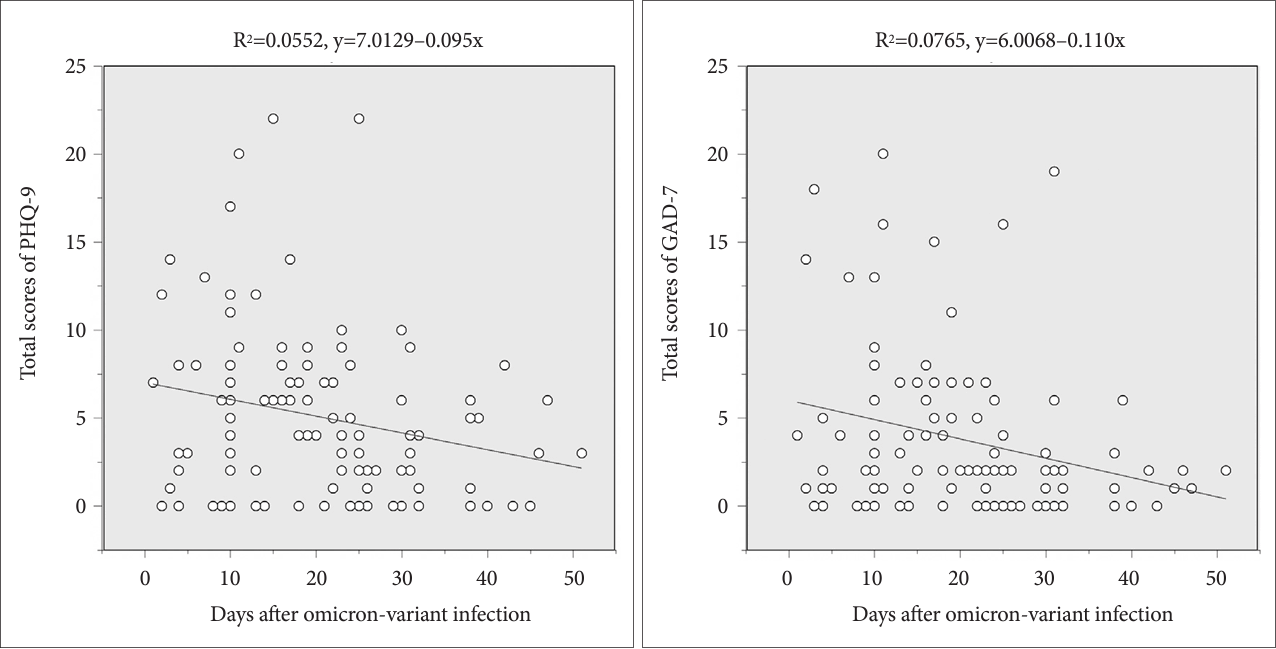

Availability of Data and Material
The datasets generated or analyzed during the study are available from the corresponding author on reasonable request.
Conflicts of Interest
The authors have no potential conflicts of interest to disclose.
Author Contributions
Conceptualization: Kukju Kweon. Data curation: Jina Park, Eunkyoung An. Formal analysis: Youngsook Kwon, Kukju Kweon. Funding acquisition: Kukju Kweon. Investigation: Jina Park, Eunkyoung An. Methodology: Youngsook Kwon, Sukyoung Jung, Kukju Kweon. Project administration: Kukju Kweon. Resources: Kukju Kweon. Software: Youngsook Kwon, Sukyoung Jung, Kukju Kweon. Supervision: Kukju Kweon. Validation: Sukyoung Jung, Kukju Kweon. Visualization: Youngsook Kwon, Kukju Kweon. Writing— original draft: Youngsook Kwon, Kukju Kweon. Writing—review & editing: all authors.
Funding Statement
This work was supported by research fund of Chungnam National University.

| Age (yr) | B | SEB | β | F | p |
|---|---|---|---|---|---|
| 19–50 (N=108) | |||||
| PHQ-9 | |||||
| Model 1 | -0.095 | 0.038 | -0.235* | 6.197 | 0.014 |
| Model 2 | -0.079 | 0.036 | -0.195* | 8.045 | <0.001 |
| Model 3 | -0.080 | 0.037 | -0.198* | 5.222 | <0.001 |
| GAD-7 | |||||
| Model 1 | -0.110 | 0.037 | -0.277** | 8.779 | 0.004 |
| Model 2 | -0.082 | 0.034 | -0.206* | 10.293 | <0.001 |
| Model 3 | -0.074 | 0.035 | -0.185* | 6.215 | <0.001 |
| ≥51 (N=52) | |||||
| PHQ-9 | |||||
| Model 1 | 0.000 | 0.055 | 0.001 | <0.001 | 0.996 |
| Model 2 | -0.016 | 0.050 | -0.042 | 4.159 | 0.006 |
| Model 3 | -0.015 | 0.048 | -0.039 | 3.273 | 0.005 |
| GAD-7 | |||||
| Model 1 | -0.038 | 0.051 | -0.105 | 0.557 | 0.459 |
| Model 2 | -0.045 | 0.049 | -0.124 | 2.487 | 0.056 |
| Model 3 | -0.040 | 0.048 | -0.113 | 1.955 | 0.076 |
Model 1 was adjusted for the days after Omicron-variant infection; Model 2 was adjusted for the days after Omicron-variant infection, physical health, and social activity status; Model 3 was adjusted for the days after Omicron-variant infection, physical health, social activity status, and other sociodemographic factors. GAD-7, Generalized Anxiety Disorder 7; PHQ-9, Patient Health Questionnaire 9